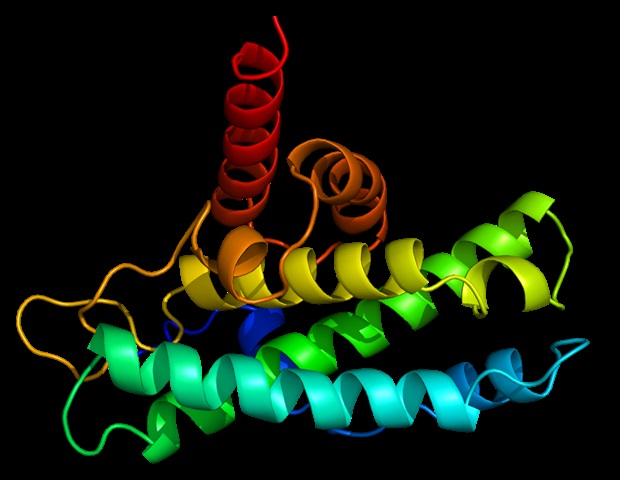Researchers at Columbia University Mailman School of Public Health have developed a novel computational pipeline designed to identify protein biomarkers associated with complex diseases, including Alzheimer’s disease (AD). This innovative tool analyzes biomarkers that can induce 3D structural changes in proteins, providing critical insights into disease mechanisms and highlighting potential targets for therapeutic intervention. The findings, published in Cell Genomics, could lead to advancements in early detection and treatment strategies for Alzheimer’s disease, which has long eluded effective therapies.
Alzheimer’s disease is defined by amyloid-beta plaques and tau neurofibrillary tangles in the brain, which accumulate decades before symptoms. Current early diagnostics are either resource-intensive or invasive. Moreover, current AD therapies targeting amyloid-beta provide some symptomatic relief and may slow disease progression but fall short of halting it entirely. Our study highlights the urgent need to identify blood-based protein biomarkers that are less invasive and more accessible for early detection of Alzheimer’s disease. Such advancements could unravel the underlying mechanisms of the disease and pave the way for more effective treatments.”
Zhonghua Liu, ScD, assistant professor of Biostatistics at Columbia Mailman School, and senior investigator
A new approach to Alzheimer’s disease
Using data from the UK Biobank, which includes 54,306 participants, and a genome-wide association study (GWAS) with 455,258 subjects (71,880 AD cases and 383,378 controls), the research team identified seven key proteins-;TREM2, PILRB, PILRA, EPHA1, CD33, RET, and CD55-;that exhibit structural alterations linked to Alzheimer’s risk.
“We discovered that certain FDA-approved drugs already targeting these proteins could potentially be repurposed to treat Alzheimer’s,” Liu added. “Our findings underscore the potential of this pipeline to identify protein biomarkers that can serve as new therapeutic targets, as well as provide opportunities for drug repurposing in the fight against Alzheimer’s.”
The MR-SPI pipeline: Precision in disease prediction
The new computational pipeline, named MR-SPI (Mendelian Randomization by Selecting genetic instruments and Post-selection Inference), has several key advantages. Unlike traditional methods, MR-SPI does not require a large number of candidate genetic instruments (e.g., protein quantitative trait loci) to identify disease-related proteins. MR-SPI is a powerful tool designed for studies with only a limited number of genetic markers available.
“MR-SPI is particularly valuable for elucidating causal relationships in complex diseases like Alzheimer’s, where traditional approaches struggle,” Liu explained. “The integration of MR-SPI with AlphaFold3-;an advanced tool for predicting protein 3D structures-;further enhances its ability to predict 3D structural changes caused by genetic mutations, providing a deeper understanding of the molecular mechanisms driving disease.”
Implications for drug discovery and treatment
The study’s findings suggest that MR-SPI could have wide-reaching applications beyond Alzheimer’s disease, offering a powerful framework for identifying protein biomarkers across various complex diseases. Additionally, the ability to predict 3D structural changes in proteins opens up new possibilities for drug discovery and the repurposing of existing treatments.
“By combining MR-SPI with AlphaFold3, we can achieve a comprehensive computational pipeline that not only identifies potential drug targets but also predicts structural changes at the molecular level,” Liu concluded. “This pipeline offers exciting implications for therapeutic development and could pave the way for more effective treatments for Alzheimer’s and other complex diseases.”
“By leveraging large cohorts with biobanks, innovative statistical and computational approaches, and AI-based tools like AlphaFold this work represents a convergence of innovation that will improve our understanding of Alzheimer’s and other complex diseases,” said Gary W. Miller, PhD, Columbia Mailman Vice Dean for Research Strategy and Innovation and professor, Department of Environmental Health Sciences.
Co-authors of the study include Minhao Yao, The University of Hong Kong; Badri N. Vardarajan, Taub Institute on Alzheimer’s Disease and the Aging Brain, Columbia University; Andrea A. Baccarelli, Harvard T.H. Chan School of Public Health; Zijian Guo, Rutgers University.
Source:
Journal reference:
Yao, M., et al. (2024). Deciphering proteins in Alzheimer’s disease: A new Mendelian randomization method integrated with AlphaFold3 for 3D structure prediction. Cell Genomics. doi.org/10.1016/j.xgen.2024.100700.
Source link : News-Medica

